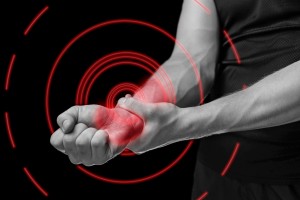 So far I have discussed what Carpal Tunnel Syndrome is, what the symptoms are, what are the commonly believed causes and common treatments.
So far I have discussed what Carpal Tunnel Syndrome is, what the symptoms are, what are the commonly believed causes and common treatments.
In this blog, I will give you an insight into my own, views, beliefs and share with you a case history of one of my clients with Carpal Tunnel Syndrome.
Whilst Carpal Tunnel Syndrome is generally felt in the wrist, hands and fingers, the source of the pain is not always from that area. The nerves that supply the wrist begin their journey from the spinal cord at the C5-T1 levels of the spine, which is the lower portion of the neck and are known as the Brachial Plexus. These nerves are routed behind the clavicle (collar bone) towards the axilla (arm pit) forming the upper, middle and lower trunks of the brachial plexus. As they pass behind the clavicle each trunk splits into anterior and posterior divisions. The divisions then unite at the axilla to form three cords, the lateral, medial and posterior cords.
These cords then form the nerves of the upper arm, the medial, ulnar and radial nerves. These nerves pass all the way along into the carpal tunnel under the retinaculum. What is known is that when a nerve is compressed it often causes pain or numbness outwards towards the extremities.
So the symptoms could be caused by compression or adhesion of the nerves anywhere from the neck to the wrist. So if only the area of the wrist is treated, it might not be getting to the area causing the problem.
I recently had a lady in her 40’s visit me with Carpal Tunnel Syndrome. She had received treatment for over 10 years with no success. After taking her health history, I assessed her posture, noting potential entrapments of the nerves (listed above).
I then systematically treated the muscles that could be adhered to these nerves using Active Release Techniques® starting from the neck and making my way down the affected extremity all the way down to the hand. During treatments, there were areas which replicated the symptoms, which often suggests that the area is the cause of the symptoms.
After the treatment, the client did have some tingling sensations in those areas, which I suggested should subside.
The client was also given advice on general posture throughout the day.
The client returned one month later for a follow up treatment and reported that in the month since the first treatment, she had only experienced one mild bout of symptoms compared to the usual daily symptoms which were normally more severe.
On treating the same areas as the first treatment the tissues were clearly a lot less tense and only one area on the forearm still contained signs of tension.
Whilst the client isn’t 100% symptom free, she was extremely happy as she just doesn’t think about it any more and it is not restricting her life or work in any way. It never ceases to amaze me how affective Active Release Technique® treatments are.
Until next time…
